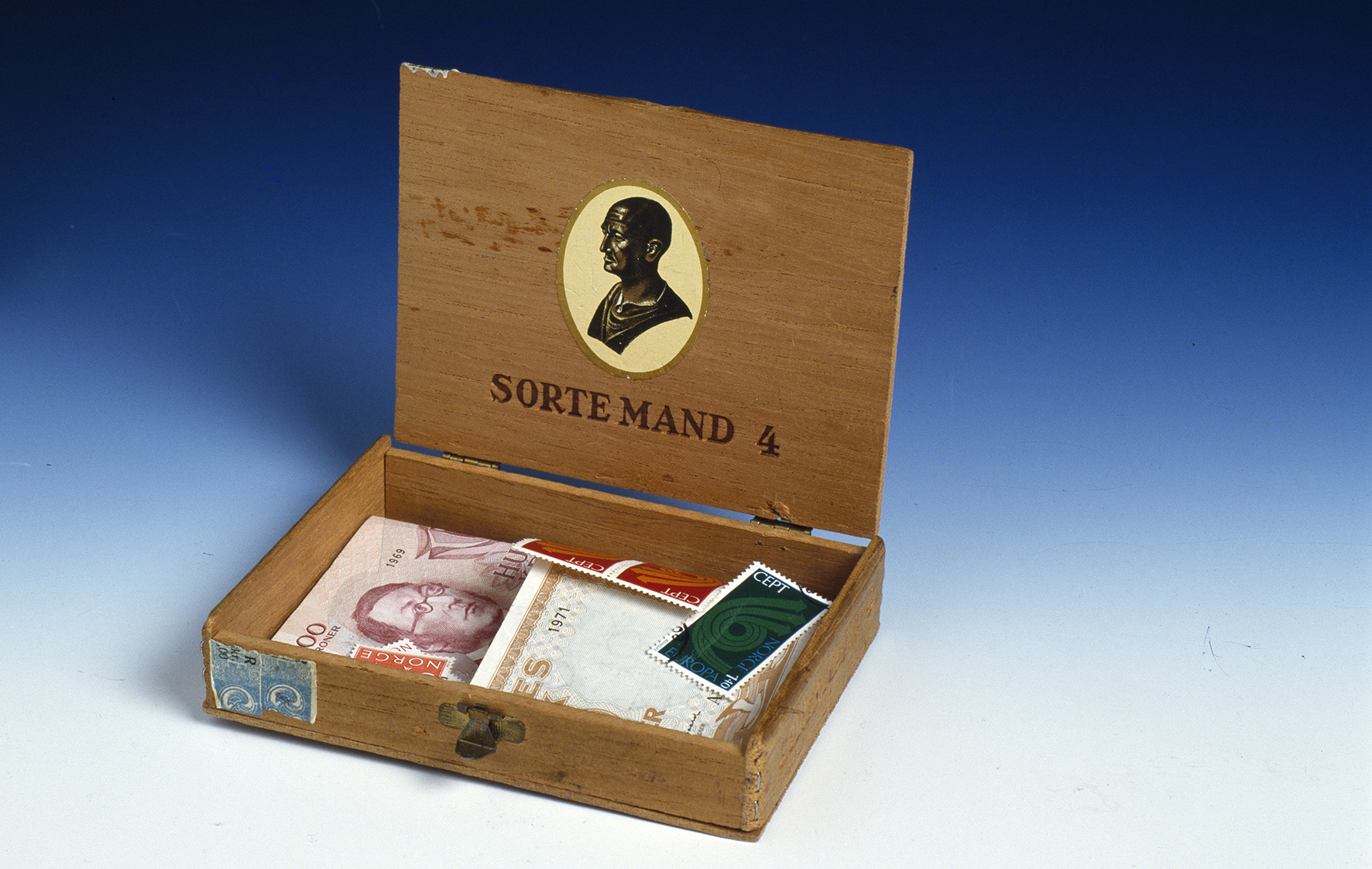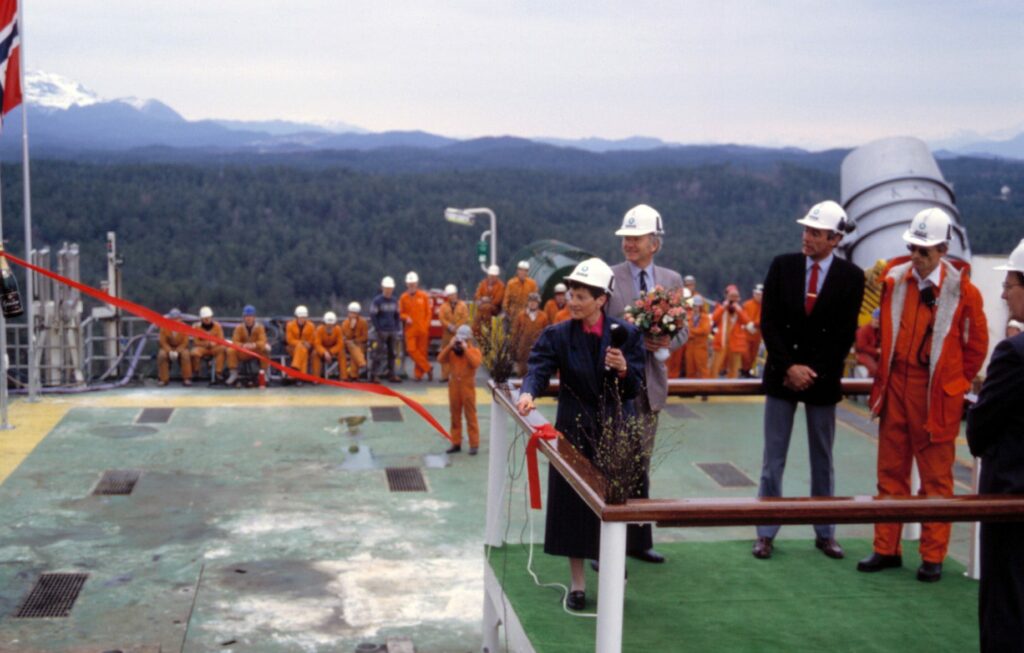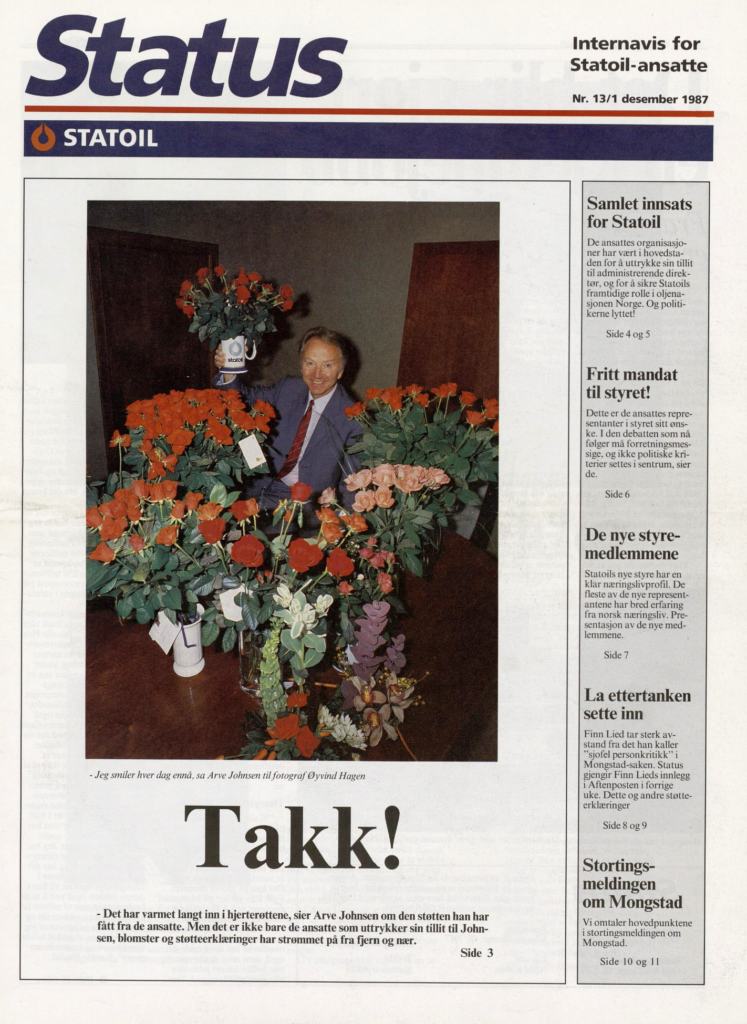Arve Johnsen – a visionary pioneer

As a leader, Johnsen was guided by his own convictions – which he managed to impose to a great extent. He was feared as an opponent – not least by conservative politicians who wanted to set limits to his influence.
Born in 1934 at Borre in Vestfold south-west of Oslo, he grew up in Hamar north of the capital where his father was the stationmaster. Johnsen attended Hamar Cathedral School, graduating in 1953, then commercial college, before taking an MSc in business economics at the Norwegian School of Economics in Bergen in 1957. He did his military service at the army college for non-commissioned officers. This taught him a lot about strategic thinking, which became important for his leadership style and found expression in his oft-repeated mantra of “capturing the strategic heights”. In 1958, Johnsen went to the USA and took an MSc in economics at the University of Kansas. He also studied in his spare time and obtained a law degree from the University of Oslo in 1960.[REMOVE]Fotnote: Norsk biografisk leksikon, https://nbl.snl.no/Arve_Johnsen.
His first job was with the Export Council of Norway in 1960-61, before serving for a decade as secretary and sales manager at Norsk Hydro – with a year out as assistant judge at Nes district court in 1964. It was during this period that he heard about Norway’s dawning oil industry and the opportunities which this offered.
Social democrat
Johnsen was socially involved from a young age, joined the Oslo Labour Society in 1962 and became chair of the Labour Party’s industry policy committee in the late 1960s. A memorandum he wrote during the summer of 1970 shaped the party’s oil and energy policy for the next few years. In it, he highlighted the need for a state oil company.
Becoming state secretary (junior minister) for industry minister Finn Lied when Labour returned to government in 1971 under Trygve Bratteli, Johnsen help to formulate a forward-looking petroleum policy. This was when the “10 oil commandments”, which have since governed Norway’s political approach to this industry, were promulgated.
Statoil’s first CEO
When Det norske stats oljeselskap (later Statoil) was established in 1972, Johnsen was offered the post of CEO by chair Jens Christian Hauge and accepted. “This will be your life’s work,” Hauge told him. “No, I’ll take it on for five years and see what happens,” he responded – but has later admitted that Hauge had been more prescient than he imagined.[REMOVE]Fotnote: Arve Johnsen, Mitt liv documentary series, season 2, Norwegian Broadcasting Corporation (NRK).

Johnsen appreciated that it would take many years before the company began to earn money, and imposed a arugal style. A cigar box from secretary Marit Falck served to hold the petty cash.
Statoil began life with an equity of NOK 5 million. It accumulated a loss of almost NOK 1 billion before starting to show a profit in 1980. Johnsen frequently cited proverbs such as “you have to sow before you can reap” and “after seven lean years come seven years of plenty”. He was determined that Statoil should cover the whole petroleum value chain, from exploration through production, transport, refining and product development to sales. The outcome was a group with many subsidiaries.
Its organisation grew rapidly and the workforce had a low average age in the early years. Johnsen was concerned to welcome all new recruits personally on the company’s introductory course.
Statoil was privileged compared with other companies operating on the Norwegian continental shelf (NCS), receiving a 50 per cent interest in all blocks awarded from 1972 until the European Economic Area (EEA) agreement came into force in 1994.
Gullfaks was the first field where Statoil was operator. Its development, with assistance from Mobil, Esso and US contractor Bechtel, marked the company’s baptism of fire and was a source of great pride for Johnsen.[REMOVE]Fotnote: Ibid.
Another high point for him came when Statoil succeeded in bringing gas ashore in Norway across the deepwater Norwegian Trench. And taking over the Statfjord operatorship from Mobil in 1987 was another important milestone.[REMOVE]Fotnote: Teknisk Ukeblad, “Tidligere Statoil-sjef Arve Johnsen: En feilvurdering å fjerne Statoil-navnet”, 19 September 2008.

During the 1980s, Statoil became a leading player in Norway’s petroleum industry. It was the largest of the three domestic oil companies, ahead of Norsk Hydro and Saga Petroleum. Under Johnsen’s leadership, the company held its own in competition with the international oil majors.
Externally, the CEO was more controversial. He could be brutal when meeting opponents if he felt they were ignorant, expressed themselves inaccurately or made incorrect claims.[REMOVE]Fotnote: Håkon Lavik, Equinor 50 år Facebook group, 18 August 2019. He was close to the Labour Party and had good contacts with its politicians, but nevertheless believed Statoil should be independent of the government. Not everyone found this consistent.
Combined with his strong – and in some politicians’ eyes arrogant – management style, that aroused irritation among certain members of the Storting (parliament). They felt Statoil had eventually become too dominant in Norway’s oil sector.[REMOVE]Fotnote: Norsk biografisk leksikon, https://nbl.snl.no/Arve_Johnsen. That led the Storting to decide in the mid-1980s that part of the revenue flowing through the company should be diverted to the state’s direct financial interest (SDFI).
Departure and afterwards
A cost overrun of more than NOK 4 billion for an expansion of Statoil’s Mongstad oil refinery was sharply criticised by the Auditor General and unleashed massive condemnation of the company’s management. Vidkunn Hveding, the Conservative who chaired Statoil’s board, opted to resign. That meant Johnsen, who was responsible for the decision base provided to the board, had to step down in January 1988.[REMOVE]Fotnote: https://statfjord.industriminne.no/en/2019/12/03/cost-overruns-and-change-of-management/

He has subsequently written several books about his time with Statoil: Utfordringen (1988), Gjennombrudd og vekst (1990) and Norges evige rikdom (2008).
Since 1988, he has worked as a consultant – including a petroleum adviser to the UN in 1991-96. Since 1991, he has also run his own law practice in Oslo and held several directorships.[REMOVE]Fotnote: Norsk Biografisk leksikon, https://nbl.snl.no/Arve_Johnsen.
Although Johnsen in his time supported a strong, wholly state-owned oil company, he has later said that Statoil’s partial privatisation and stock market listing were important and necessary.
He was not equally positive to the merger with Hydro’s oil and energy division, and was convinced that the two companies would had done better to maintain their independence or ally with foreign partners. Without competition between them, opportunities for technological development were reduced.[REMOVE]Fotnote: Teknisk Ukeblad, “Tidligere Statoil-sjef Arve Johnsen: En feilvurdering å fjerne Statoil-navnet”, 19 September 2008.
Johnson was also very critical of changing Statoil’s name to StatoilHydro and then to Equinor. That helped to damage the Statoil brand, he maintained.
In his view, the intention underlying the Equinor name –reflecting a more environment-friendly future – obscured the fact that the group remained primarily state-owned and almost wholly involved with oil and gas.[REMOVE]Fotnote: https://www.aftenbladet.no/aenergi/i/Kve0o5/statoils-foerste-sjef-til-kamp-mot-equinor-navnet, 19 March 2018.






